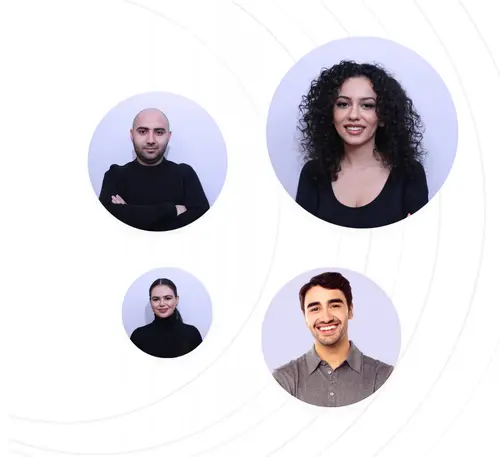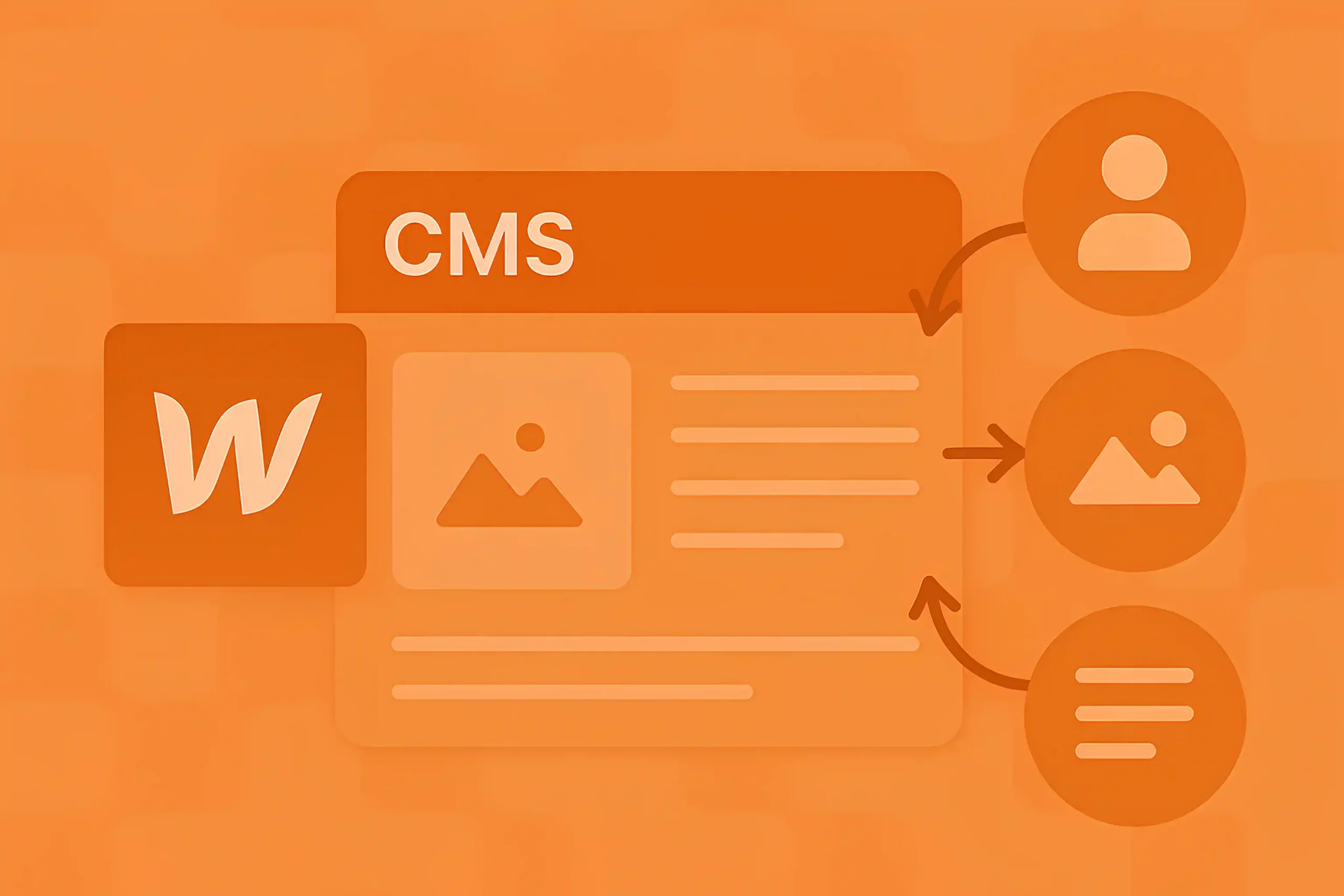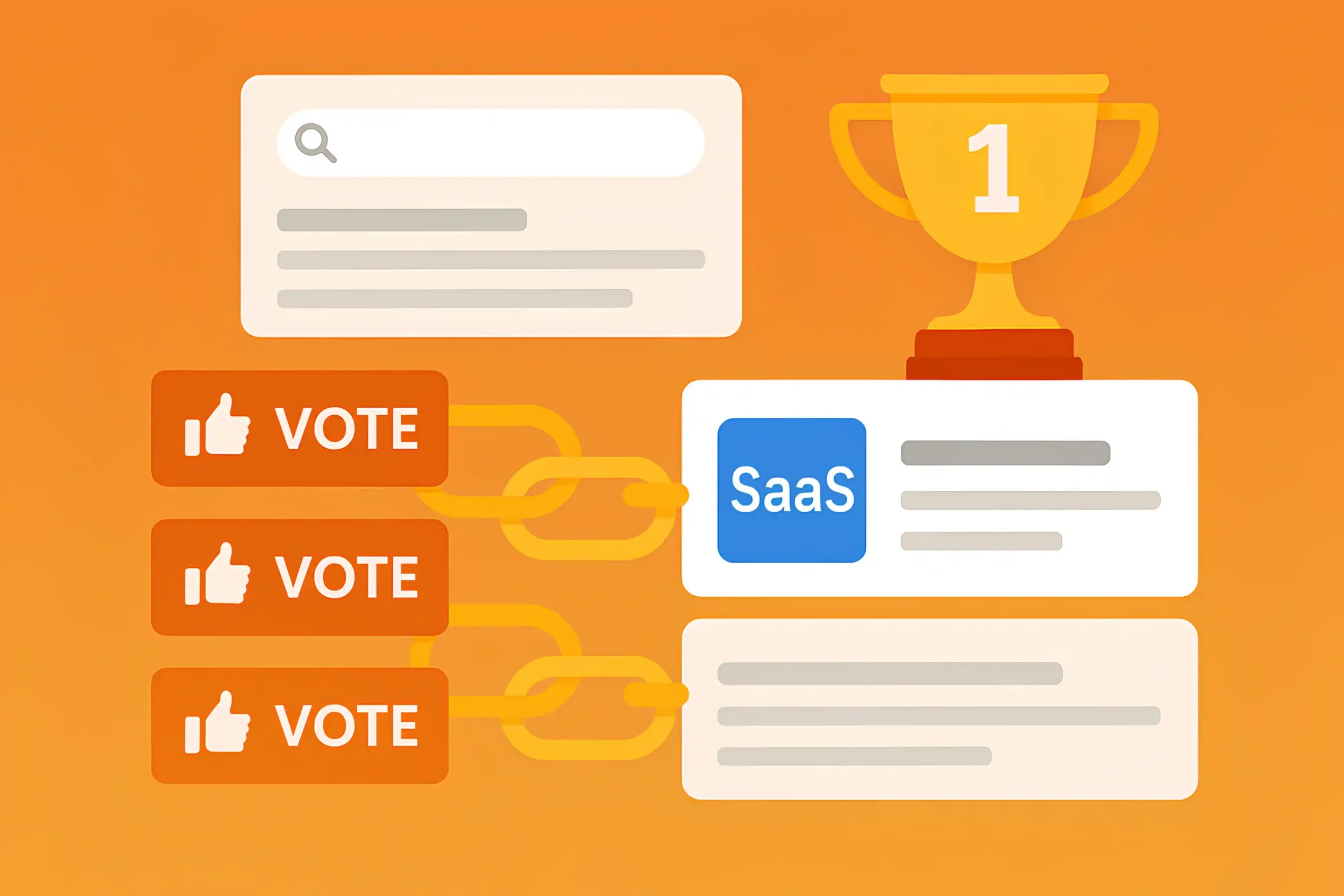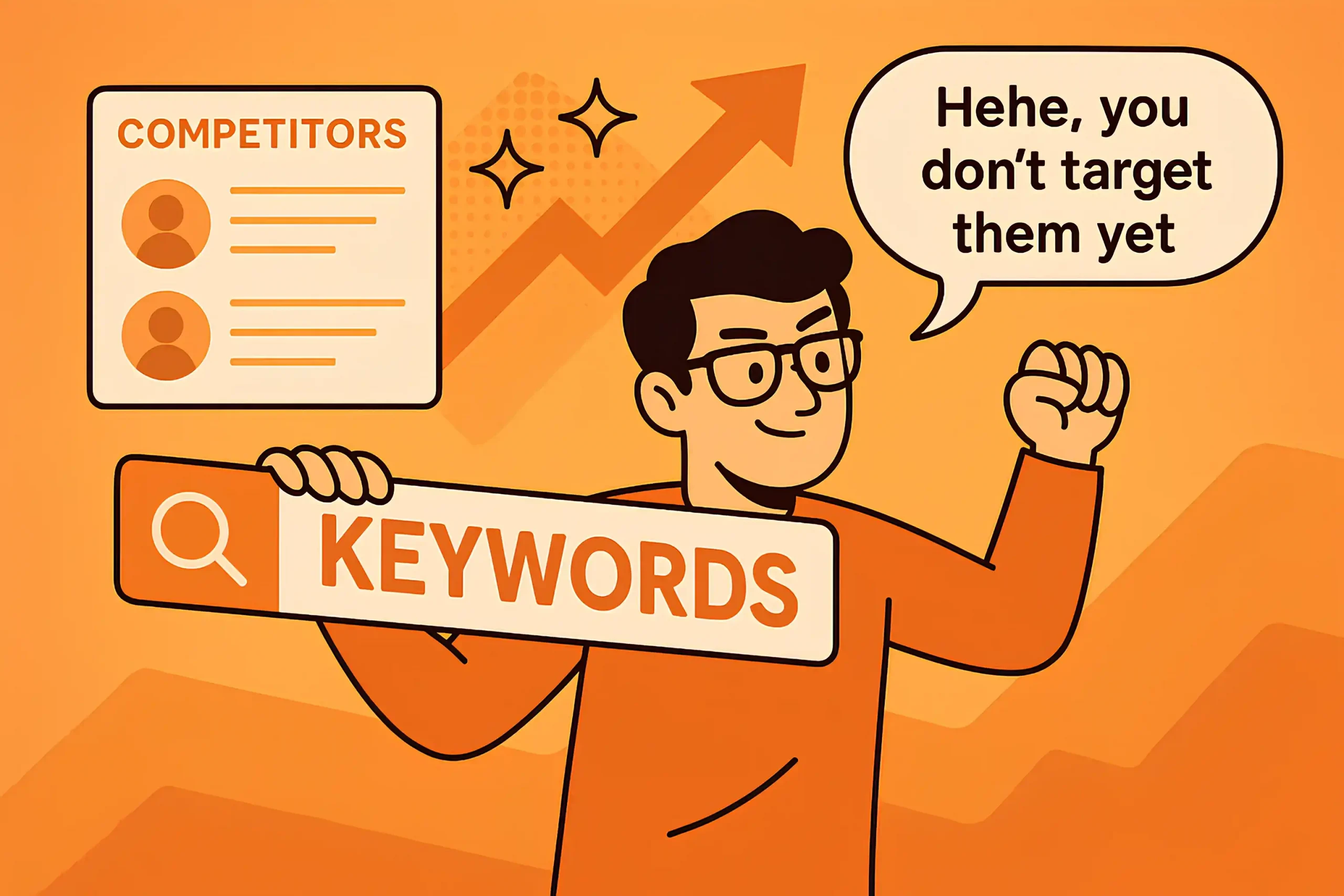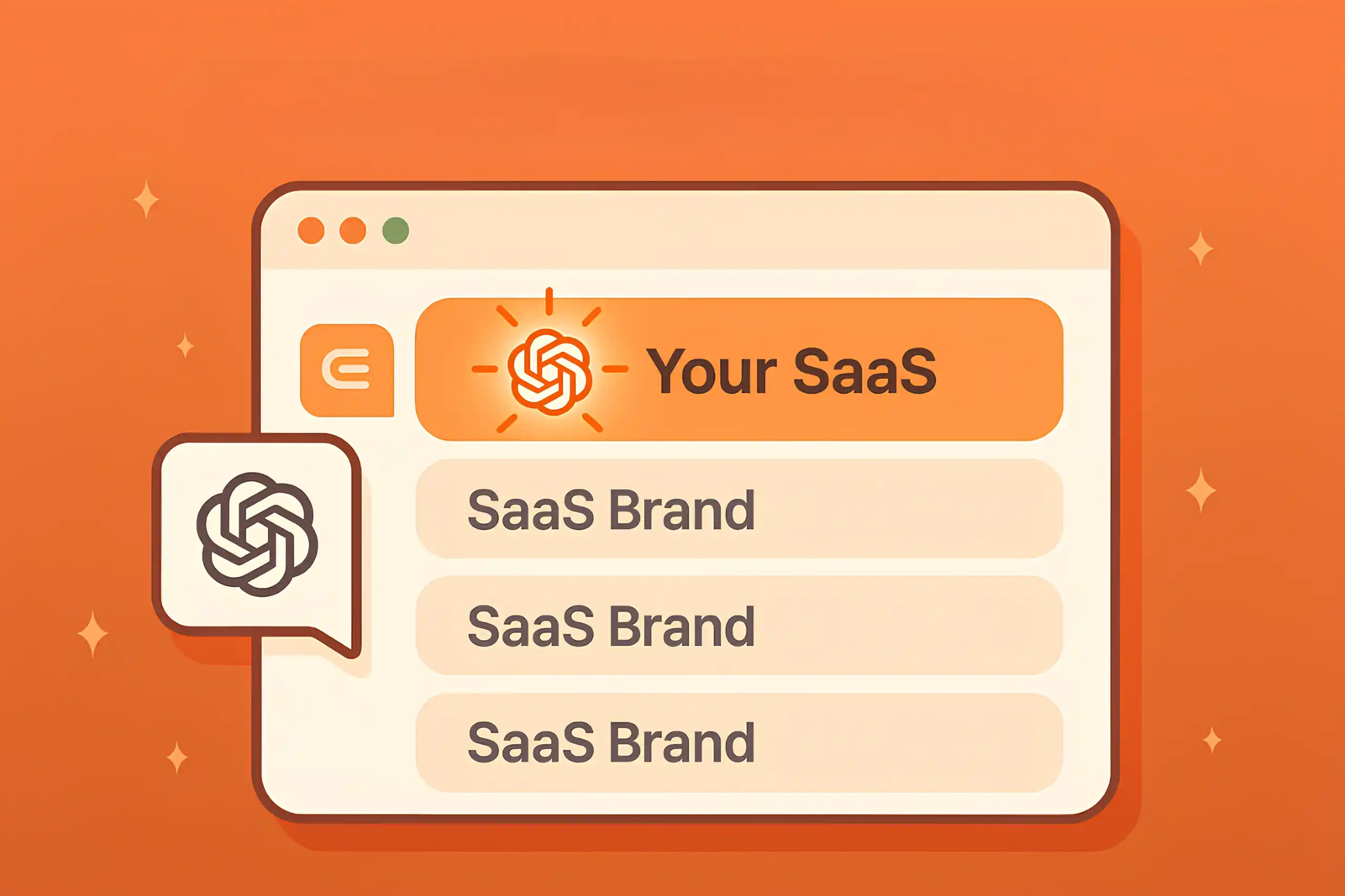Updated October 29, 2025
How to Run a Content Audit for SaaS: 2025 Edition (Template Included)
Most of our SaaS clients come to us saying something like, “We need a content strategy,” or “We’re ready to scale SEO.” Then we take a quick look at their site and find 100+ blog posts, barely getting any traffic.
Most of them were written years ago, with no real structure or purpose. Some are just random topics someone came up with to “keep the blog active.”
What I’ve learned over the years is that you don’t always need to create more content. In many cases, you just need to fix what’s already there.
In this guide, I’ll share how I approach content audits for SaaS, what I look for, how I prioritize issues, and the techniques I use to turn “dead” content into something that brings signups and leads again.
What Is a Content Audit for SaaS Companies?
A content audit for SaaS companies is a process of understanding how every piece of content fits into your overall growth strategy, from awareness to conversion.
When I talk about a SaaS content audit, I mean going through your entire content library to see what’s helping your business and what’s just taking up space.
It’s looking at your blog posts, landing pages, comparison pages, and even your help center content, and asking: does this still make sense for who we are today? Does it match what our target users are searching for?

SaaS content needs a different kind of audit because it’s usually built around fast-changing products, features, and user intent. What worked a year ago might be irrelevant today. Most SaaS blogs are filled with old how-to posts that used to bring traffic but no longer align with the product or customer journey.
Looking for real examples? Explore our SaaS SEO Case Studies
When to Run a Content Audit for a SaaS
There’s usually a moment when you can just feel that your content isn’t working anymore. Meanwhile, your team keeps publishing new posts every week, yet your organic growth barely moves.
In my experience, a SaaS company should seriously consider a full SaaS SEO content audit when one or more of these things start happening:
You’ve been publishing for years, but your top pages are still the same ones driving traffic, new content doesn’t perform as well as old content, or you’re ranking for the wrong keywords: topics that attract readers, but not potential customers.
Another common one: you’re getting traffic, but almost zero signups or demos from it.
I also recommend doing an SEO content audit after major updates, like when your SaaS product changes direction, new features are launched, or your positioning shifts.
You’d be surprised how many SaaS companies still have content describing outdated versions of their product. Those pages confuse users and search engines.
If you’ve just gone through a redesign or SEO website migration, that’s another big moment to audit everything. Internal links often break, old redirects stack up, and analytics tracking gets messy; all things that can quietly hurt your organic performance.
When you see those signs, that’s usually when hiring a SaaS SEO agency or at least an experienced SEO consultant makes sense. An outsider can look at your content objectively, without being attached to what’s already been written.
They’ll help you see where your content gaps are, what should be updated, what should be merged, and what’s worth deleting altogether.
Got great content already? Our SaaS link-building services can help you turn it into real search visibility by earning editorial backlinks from trusted tech and business websites.
Content Audit for SaaS: Steps by Step Process
In this section, I’ll walk you through how I personally run a SaaS content audit step by step. It’s the exact process our SEO agency follows when auditing SaaS websites: what I look for first, how we decide what’s worth fixing, and how our team turns messy content into something that drives signups and traffic again.
Whether you’re planning to do it yourself or work with an SEO consultant, these steps will help you understand where to start, what to prioritize, and how to spot the biggest opportunities hiding in your existing content.

Collect All Content Assets
The first thing I do in any SaaS content audit is collect everything. I mean literally every piece of content that exists on the site. You can’t make smart decisions if half the pages are missing from your list.
So before I start analyzing, I make sure all blog posts are in front of me, usually in a clean Google Sheet. To make sure nothing slips through, I always use two sources.
First, I check the XML sitemap and export all the URLs, especially the ones under the /blog/ or /resources/ section.
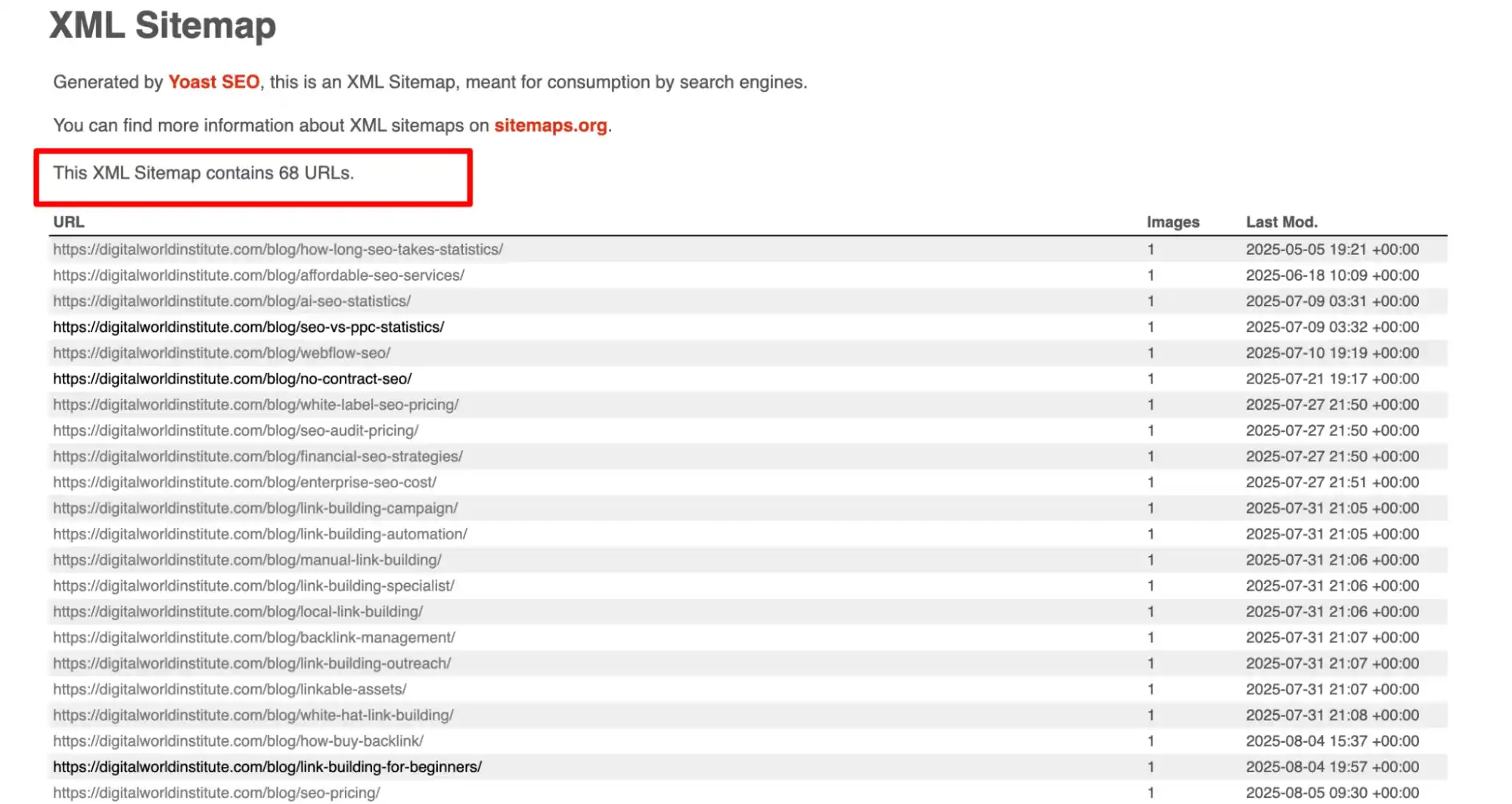
Then I run a full crawl with Screaming Frog (Free version allows up to 500 pages) or Sitebulb. These tools usually find pages that aren’t even listed in the sitemap; for example, old blog posts, orphan pages, or pages created by plugins that no one remembers.
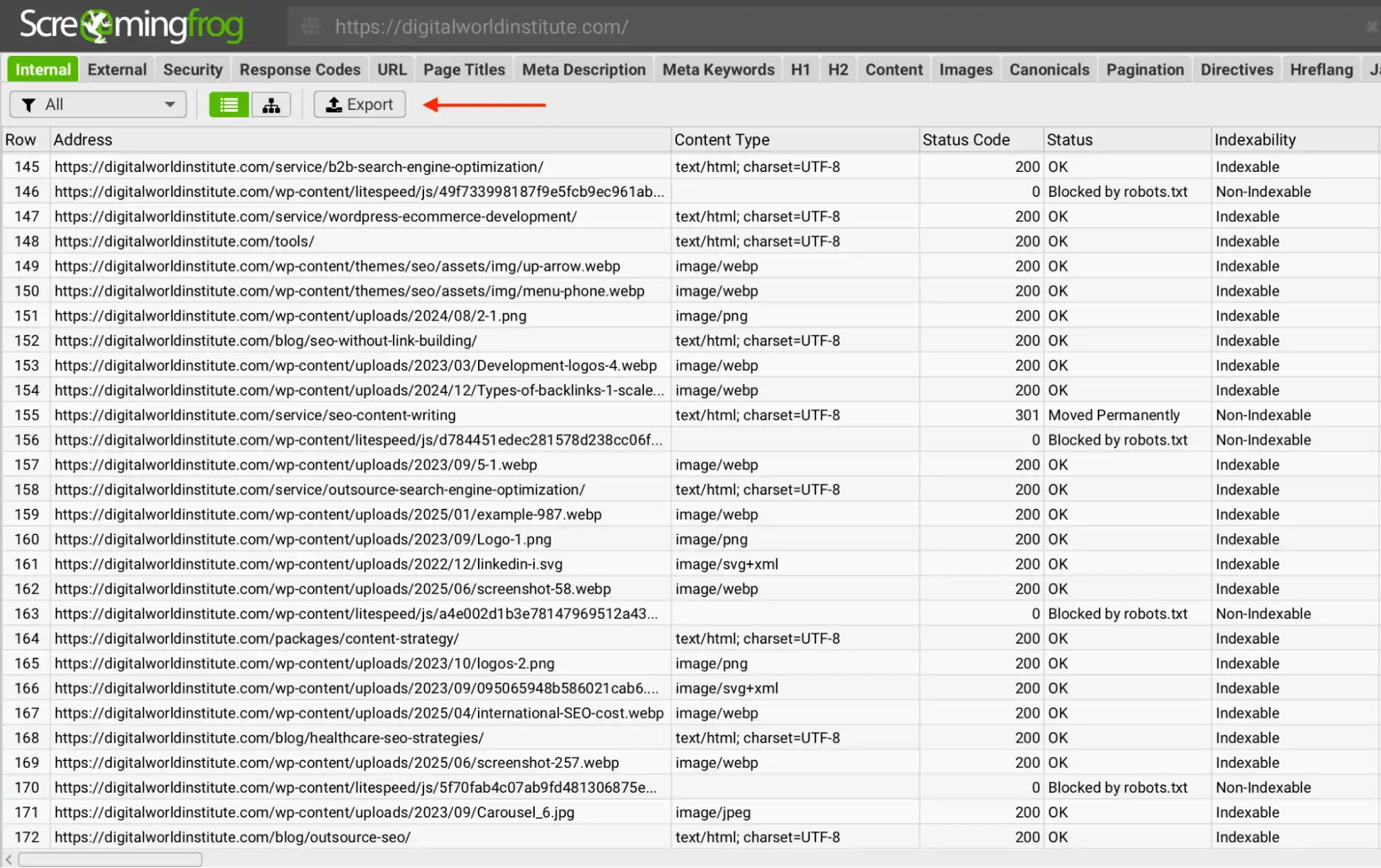
Once I have everything exported, I filter and organize the list manually in Google Sheets, removing irrelevant URLs and keeping only the pages that matter for the audit.
This step sounds boring, but it’s one of the most important. If you start the audit with an incomplete list, you’ll miss major issues, like duplicate posts competing for the same keyword, or old pages that still get traffic but aren’t optimized for conversions.
A complete list gives you the full picture before you decide what to fix, merge, or delete.
Map Content to SaaS Buyer Journey
Once I have all the URLs in one place, the next step is mapping each piece of content to the SaaS buyer journey. This step is what turns a simple content inventory into a strategy. Without it, you’re just looking at a pile of pages with no clear purpose.
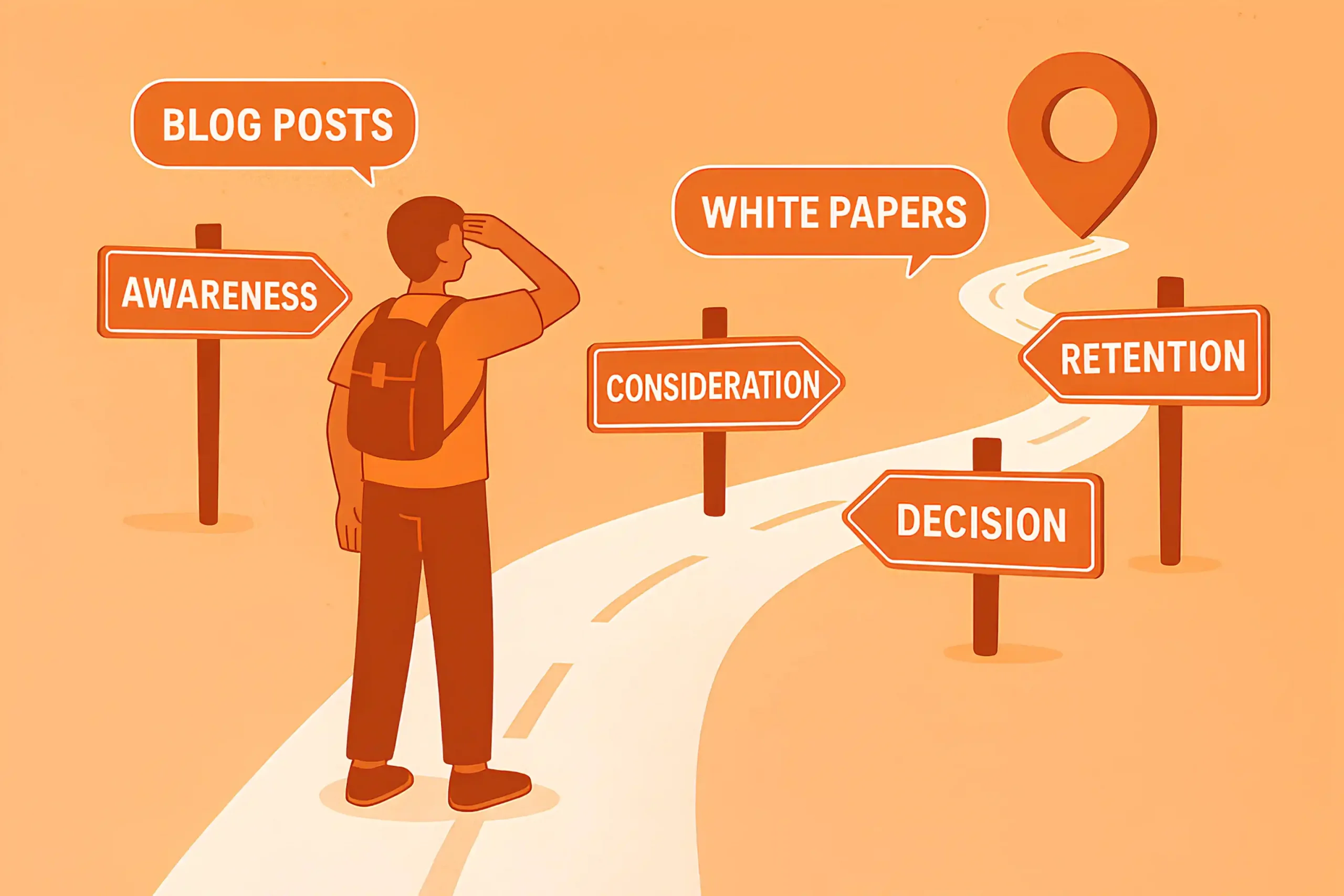
SaaS content works differently from eCommerce or blogs; people don’t usually read one post and sign up right away. They go through multiple stages: awareness (understanding a problem), consideration (comparing tools or methods), and decision (ready to try or buy).
If your content doesn’t cover each stage properly, you’ll lose people halfway through.
Here’s how I usually do it: once my Google Sheet has all the URLs, I create a new column called “Funnel Stage.” Then I go through each page and mark where it fits: top, middle, or bottom of the funnel.
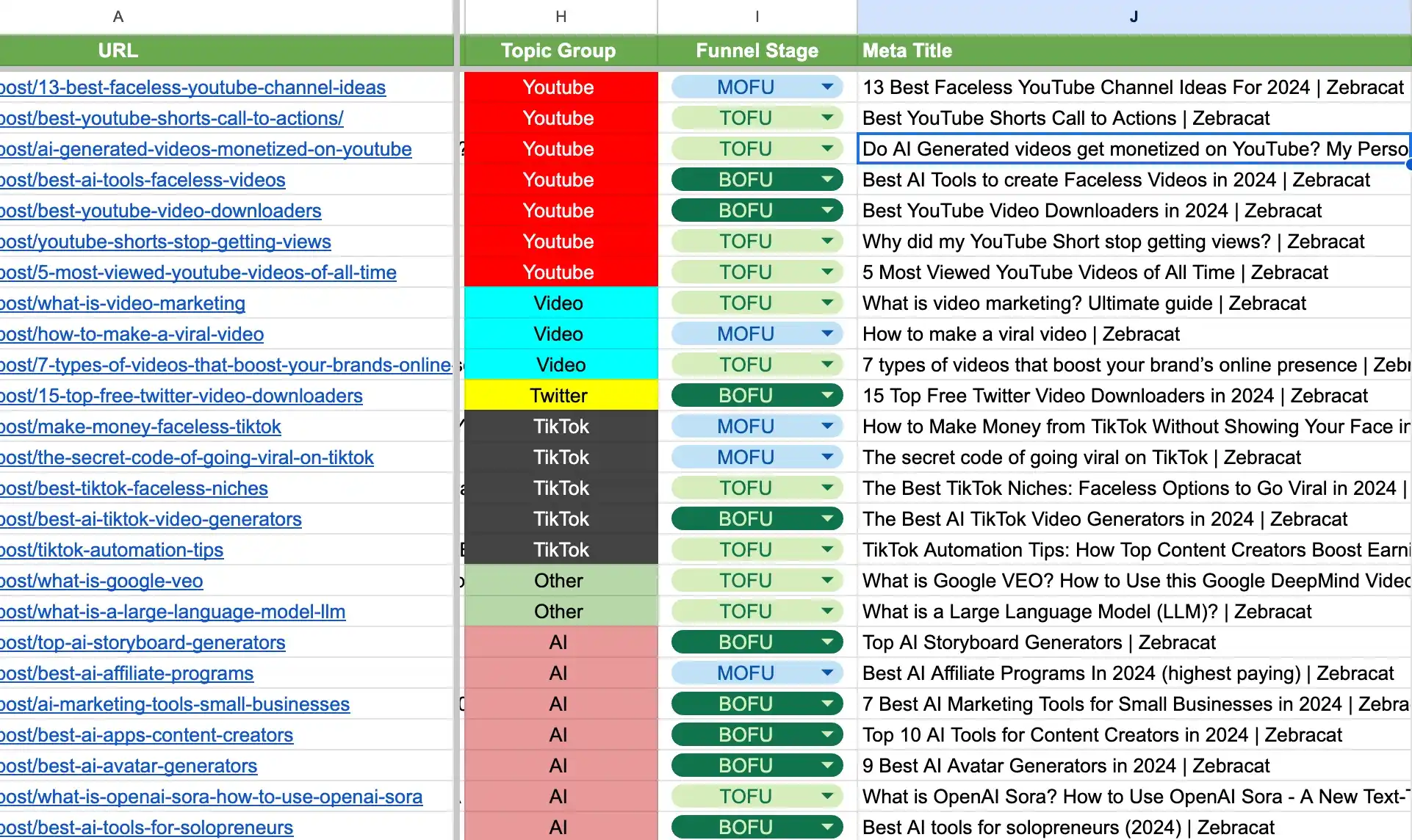
- Top of the funnel content is usually educational: “what is,” “how to,” or industry insights.
- Middle of the funnel pieces compare approaches or introduce solutions (for example, “how to automate client onboarding for SaaS”).
- Bottom of the funnel content is where the product gets more visibility: feature pages, comparison pages, case studies, or demo-related content.
Generally, I also add another column called “Intent”: informational, transactional, or navigational, to make sure the content type matches the user’s search behavior.
When mapping, I think about the product and the business model. For B2B SaaS SEO, content often needs to build trust and help different decision-makers (marketers, CTOs, founders) understand the value.
So I map pieces around use cases, integrations, and ROI topics. For enterprise SaaS SEO, I pay more attention to long-tail queries, solution pages, and whitepapers that speak to buying cycles.
One simple example: I once audited a SaaS company with dozens of blog posts around “automation tools,” “workflow tips,” and “productivity hacks.” All of them were awareness-level posts: great for traffic, but none linked down to product pages or comparison guides.
After mapping them properly, we connected the dots through internal links and CTAs. Within a few months, those same articles started driving demo requests.
So the idea here is simple: don’t just look at content by keyword difficulty or traffic. Look at it by purpose. Every SaaS article should have a clear place in the buyer journey, and you should be able to see that visually right inside your Google Sheet.
Once you do this, you’ll instantly spot the gaps where your funnel is weak, and those are the pages you’ll want to create or improve next.
Audit Technical SEO and UX
When I get to the technical, SEO, and UX part of a SaaS content audit, this is usually where most problems hide. You can have amazing content, but if it’s not indexed, not credible, or painful to use, it simply doesn’t matter.
Whether you’re auditing SaaS content or any other website, the basics always decide whether your strategy works or fails.
SaaS websites often have a lot going on behind the scenes: multiple subdomains, product pages built in React, endless redirects, heavy JavaScript, and a ton of automation. So before touching the content itself, I look at the site’s foundation.
Further reading: Technical SEO for SaaS: Complete Checklist
One of the first things I check is indexation and crawl health. It’s very common for SaaS companies to lose hundreds of pages from Google’s index without realizing it.
Sometimes it’s crawl budget issues caused by thin or duplicate content; sometimes it’s because Google simply stops trusting low-value pages. This is especially common for programmatic SaaS SEO, when a business generates thousands of feature or integration pages at once.
Over time, Google crawls fewer of them, and you start seeing “Crawled – currently not indexed” warnings in Search Console.
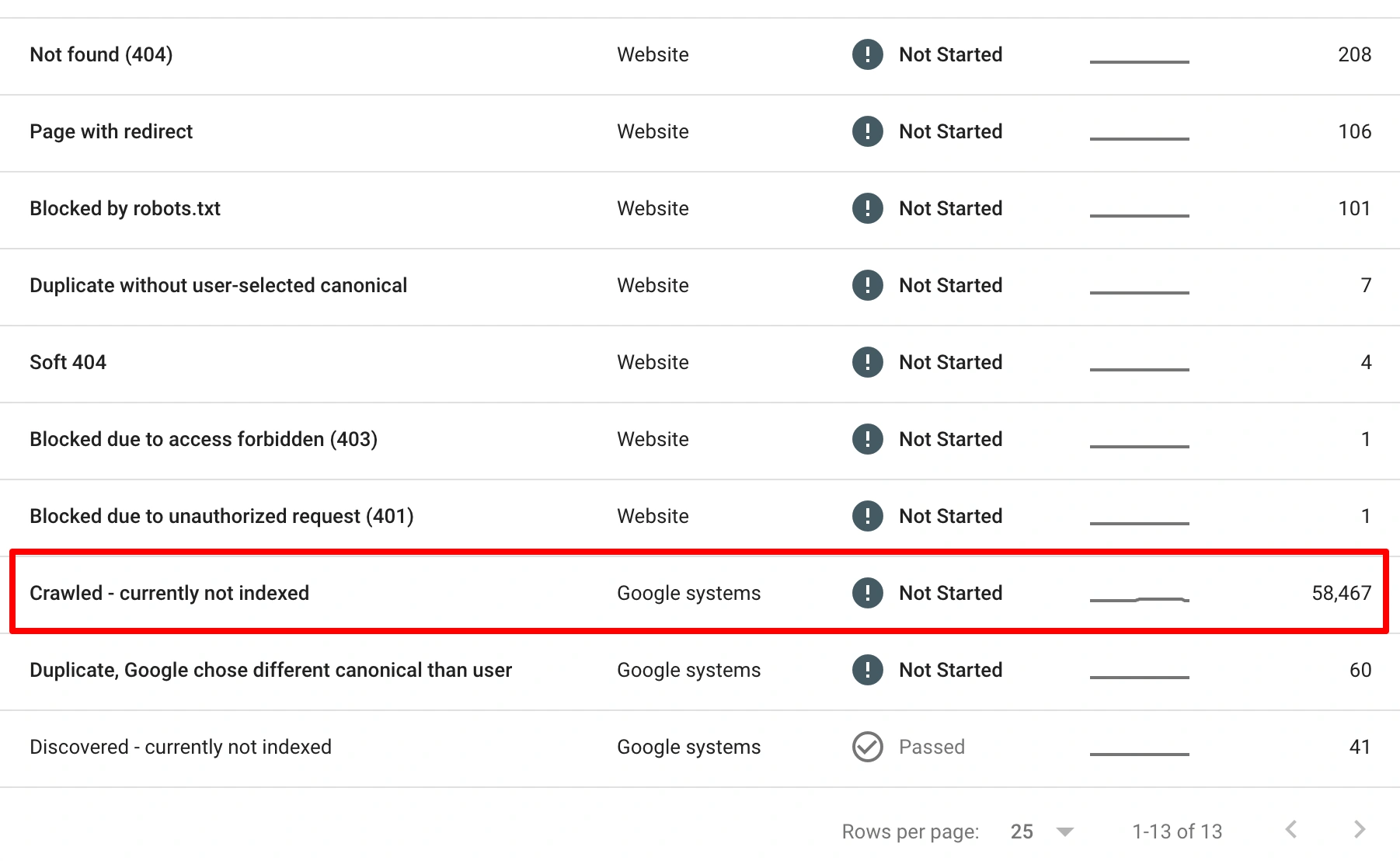
I also pay close attention to technical duplication and cannibalization. Many SaaS sites create the same topic in ten different ways; for example, “Best CRM tools,” “Top CRM software,” “CRM alternatives,” and “CRM comparison.” They all target the same keyword and compete with each other.
My process is simple: find these clusters, pick the strongest version, and merge or redirect the rest (Depending on some factors). It instantly strengthens authority and helps one page rank better instead of splitting the signals across many.
But today I also would like to address some common UX related issues:
For example, a blog post might load fine, but navigation, readability, and CTAs often break the flow. Countless SaaS articles where readers get lost: too many pop-ups, repetitive CTAs, or broken internal links after a redesign.
For SaaS sites, UX is more than design; it’s how clearly content connects to the product journey.
When someone reads a “How to automate onboarding” article, the next step should be obvious: maybe a link to the automation feature, a case study, or a short demo video.
Recommended reading: Webflow SEO for SaaS
So when I say “audit technical SEO and UX,” I don’t mean just checking site speed or title tags. I mean digging into how your content is experienced by both Google and real users.
If the site isn’t clean, fast, and credible, even your best-written content won’t perform.
Audit Content Quality and Relevance
First things first, I’m not going to give you a generic checklist like “optimize your H1s” or “add more keywords.” What I want to share are the real things you should pay attention to when auditing your SaaS content.
Every SaaS project has its own structure, its own audience, and its own content challenges.
Once you’ve built your checklist, the real work starts: going through each piece of content one by one.
You open every URL, review it against your checklist, and note what needs to be updated, merged, or removed.
Of course, no checklist will ever cover everything. Every SaaS website has its own nuances: outdated templates, custom integrations, or internal systems that don’t behave like a standard blog.
So while the checklist keeps you consistent, you still need to make judgment calls. Sometimes that means reviewing a piece manually with your team, sometimes it means using automation or some SEO tools to speed up repetitive parts like scanning for outdated keywords, broken links, or metadata issues.
Also read: Link-Building for SaaS: Complete Guide
Once all pages are reviewed, I prefer to organize everything in one place; either in Google Sheets, ClickUp, or Notion. You can tag each page by its status (keep, update, merge, remove), assign owners, and set deadlines.
This way, everyone, from writers to developers, knows what they’re responsible for. It also keeps the process transparent, especially when multiple people are working on different parts of the content.
Measure Performance with SaaS-Specific Metrics
SaaS metrics should go beyond traffic and keyword rankings. These are nice to monitor, but they don’t tell the full story.
Many SaaS companies get excited about a 40% traffic increase, only to realize none of that traffic converts, because most of it came from low-intent blog posts that attract students and freelancers, not actual buyers.
Next, I look at content-to-product flow: how well users move from informational to commercial content. This is where I track assisted conversions, demo requests, or free trial signups that originate from content pages.
Tools like HubSpot, Segment, or Matomo can give more depth here if GA4 feels limited. I don’t rely solely on one source (but it’s not necessary to track the data everywhere).
Another thing I monitor closely is content decay and recovery. Many SaaS companies ignore this completely. After optimizing or rewriting,
I track each URL in Google Search Console and Ahrefs over the next 4–8 weeks. I also look at how long pages hold their rankings; if a page peaks and then drops after a few months, it usually means Google tested it, then decided it wasn’t satisfying the intent.
Schedule a strategy call with our B2B SaaS SEO agency or request a no-obligation proposal.
In GA4, you can build a custom dashboard that tracks first attribution, meaning it shows which blog posts are responsible for bringing users to your website for the very first time, even if they don’t convert right away.
This helps you identify content that plays a long game in your funnel; the pieces that quietly build awareness and eventually lead people back to sign up or book a demo.
Identify Content Gaps and Opportunities
I believe it’s also very important to fill all the gaps and strengthen overall topical authority. The first step is finding missing clusters and subtopics. This is usually the fastest and most scalable way to identify growth opportunities.
What I often do is take a group of related pages; for example, all content around “workflow automation” or “SaaS onboarding,” and then use AI SEO automation to expand on it.
You can easily prompt ChatGPT or a similar system with something like:

The AI will quickly generate new ideas related to pain points, feature-focused articles, comparison angles, or niche queries that competitors are covering but you’re not.
Of course, I never rely on AI blindly. Once I get a batch of ideas, I always verify them manually in Ahrefs or Semrush.
I check keyword intent, search volume, and most importantly, whether those keywords match the audience I want to attract.
Related article: How to Use ChatGPT for SEO
The second option is discovering content gaps from your own data, not from keyword tools.
Many of the best ideas come straight from Google Search Console.
When I audit a high-performing article, I always look at the “Queries” tab; it often shows dozens of keywords the page ranks for that aren’t actually mentioned in the content.
For example, for the content “InShot vs. CapCut,” I see a keyword “VN vs CapCut vs InShot” which is not covered yet in our content.

That’s our opportunity to add a new H2 or create a separate cluster, an internally linked article around that subtopic.
This kind of on-the-fly optimization doesn’t require new content from scratch; it strengthens what’s already working.
By expanding around existing pages, you give Google clearer topical signals and improve internal linking between related posts. Over time, this helps your entire content cluster perform better, not just individual articles.
For more advanced setups, I also map content clusters visually using tools like Miro or even Notion boards. Each main topic becomes a “pillar,” and every related post, guide, or case study links back to it. It’s not just good for SEO; it helps your team understand where every page fits within your SaaS funnel.
So when you audit content, don’t limit yourself to fixing what’s broken. Think of it as an opportunity to expand what’s missing to fill those silent gaps where your competitors already earn attention.
Categorize Content Actions
Once you have the full picture of your content: what’s performing, what’s outdated, and what’s missing, the next step is to categorize and prioritize your actions.
I usually start by grouping every page into clear categories: keep as is, update, merge, rewrite, or support with new content. But instead of treating these as fixed labels, I look at them as levels of priority.
The first factor I look at is the funnel stage.
For SaaS companies, bottom-of-the-funnel content usually deserves attention first.
Next, I look at ranking potential. If a page is ranking on page two of Google, that’s usually a low-hanging fruit. Those pages often need just a bit of extra work: a fresh section, internal links, and stronger E-E-A-T signals to push them onto the first page.
Once priorities are clear, I move to assigning responsibilities. I usually assign bottom-funnel and technical pages to more senior SEO writers or strategists who understand both the product and conversion flow.
Finally, I always balance quick wins and long-term plays.
A good audit should give you both: pages you can optimize this week for instant results, and broader clusters that will build authority over time.
AI Content and the Risk of Duplicate “Generic” SaaS Blogs
I’ll be honest, AI content isn’t bad. It’s only bad when it’s used the wrong way. If you’re a SaaS founder or a CEO who understands your product, market, and customers, AI can be a massive time-saver.
You can feed tools like ChatGPT or Gemini your own insights: real problems, user pain points, examples from customer conversations, and let them help you organize those thoughts into a structure.
That’s perfectly fine because you’re using AI to accelerate, not replace, your thinking.
Related article: Is AI Content Good for SEO?
But the problem starts when companies outsource everything to generic writers who don’t understand the product or the industry at all.
They open ChatGPT, rewrite what’s already ranking, and turn it into another lifeless version of the same content.
It looks neat, it sounds “SEO-friendly,” but it has no real expertise behind it.
I’m confident that this won’t last. Google and LLMs are already shifting toward valuing expertise, experience, and originality, not generic rewrites.
Over time, AI-paraphrased posts will fade into the background, buried on page two, while content with real insights and product understanding will dominate. The days of “filling the blog” just to have content are almost over.
So if you’re using writers, even good ones, invest the time to train them properly. Make sure they understand your product, your audience, and the subtle language your customers use.
Teach them the fundamentals of SEO, not for keyword stuffing, but so they can write naturally while still making content discoverable.
Walk them through your demos, your product positioning, your competitors, and your buyer personas. Help them grasp not just what your product does, but why it matters.
Yes, it might take a month or two to get them to that level. But once they’re trained, they’ll produce content that sounds like your brand, speaks to your audience, and builds real authority. Meanwhile, your competitors will still be busy spinning AI content that no one remembers.
Related article: Keyword Research Techniques for SaaS
Google’s AI Overviews and How to Optimize Content for Them
There’s no real secret to appearing in Google’s AI Overviews: good, trustworthy content still wins. From what I’ve seen, the websites that consistently appear there are the ones that already have strong topical authority, a solid brand reputation, and a clear record of expertise across their niche.
I mean, there are a few practical tactics that can make a difference. The first is structure and clarity. Google’s AI systems tend to pick quick, direct answers from pages that get straight to the point.
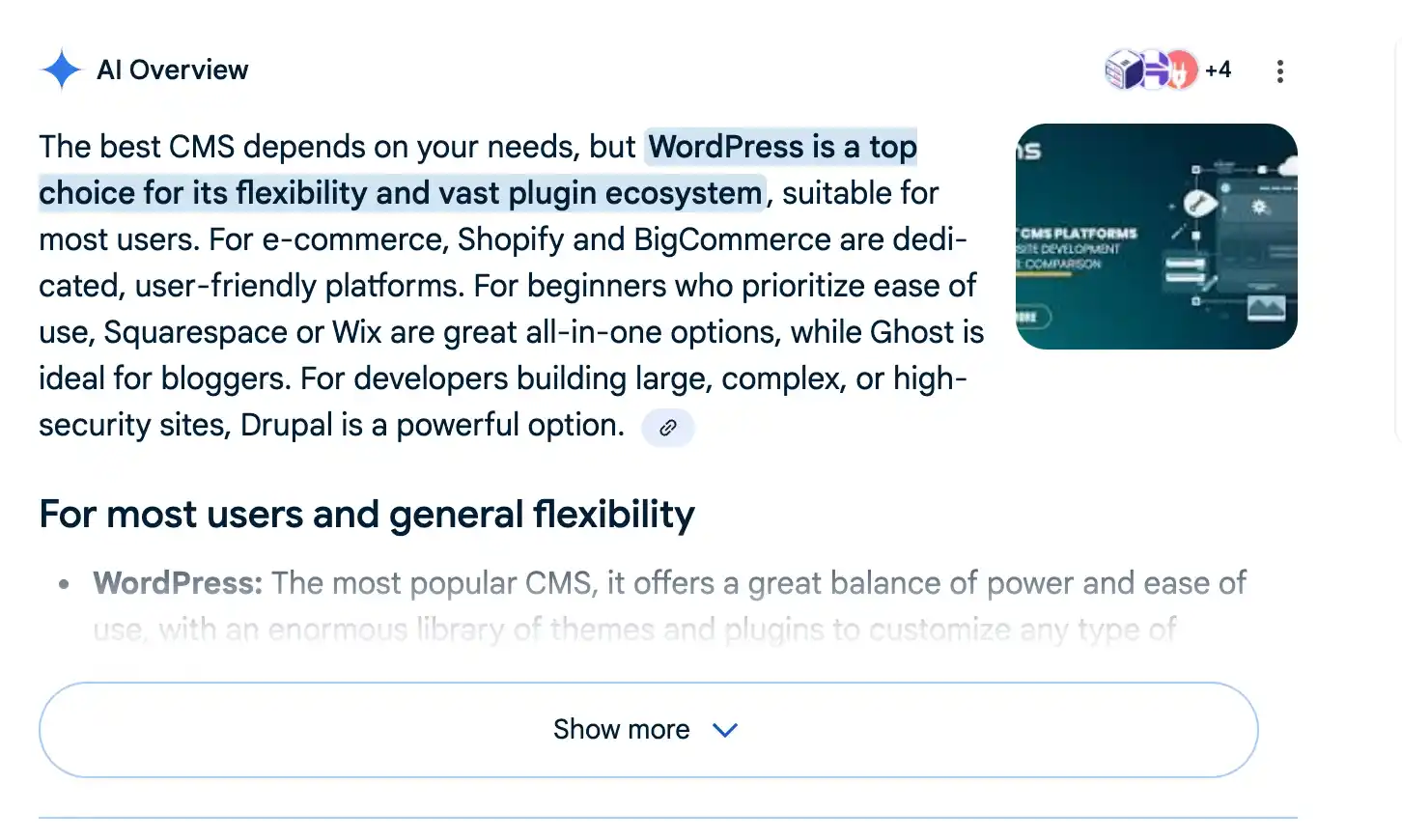
So, if possible, address the main question or topic within the first 100 words. Don’t hide the answer under long introductions or unnecessary context. Then, build the rest of the content around that answer: explain it, support it, expand on it.
The second is depth backed by credible sources. AI Overviews love content that feels authoritative and fact-based.
Link to external studies, trusted data sources, or well-known experts in your industry. When your claims are supported by real evidence, your content sends stronger trust signals; not just to readers, but also to Google’s systems.
So yes, AI Overviews reward quality, structure, and trust, not hacks. If you’d like to go deeper into how to optimize your SaaS for LLMs and AI-driven search, I’ve covered that in detail in my full guide on LLM optimization for SaaS.
PLG Model Content Alignment: Audit Trial Onboarding Journeys
When a SaaS company runs on a product-led growth (PLG) model, the content strategy changes completely. You’re not just trying to attract traffic or book demos, but guiding users through a self-serve journey where the product itself is the conversion funnel.
In other words, your content has to do what sales used to do: educate, build trust, and help users experience the product’s value as fast as possible.
From an auditing perspective, this means your content review shouldn’t stop at blogs and landing pages.
You need to evaluate how your content supports the full PLG flow, from discovery, to sign-up, to activation, to expansion.
How Often Should SaaS Companies Run a Content Audit?
I think most SaaS companies should do a light audit every quarter and a deep, full-scale audit once or twice a year. The light audit is more like a health check; you quickly review what’s gaining or losing traffic, identify content decay, and fix small issues before they grow.
The deep audit is where you re-evaluate strategy: mapping content to the buyer journey, analyzing conversions, and deciding what to update, merge, or delete.
For fast-moving SaaS companies, especially those launching new features every month, content gets outdated faster than you think.
Screenshots, pricing, UI terms, and even positioning can change in weeks. So, the more frequently your product evolves, the more often you should audit your content.
Can a Content Audit Help Reduce Churn in SaaS?
Absolutely. It can directly lower churn. Most SaaS churn happens because users never fully understand the product’s value or can’t connect it to their everyday workflow.
When your educational content, onboarding materials, and help articles are outdated or incomplete, users get frustrated and leave.
By auditing your content, you can identify those weak spots: missing tutorials, outdated how-to guides, or product feature explanations that no longer match the current UI.
Updating them not only improves user experience but also helps customers succeed faster.
What Tools Are Best for SaaS Content Audits?
I usually keep my stack simple. Google Search Console and GA4 give me real performance data: clicks, impressions, and user behavior.
Screaming Frog (or Sitebulb) helps me crawl the site, export all URLs, and spot technical or structural issues.
Ahrefs (or Semrush) is perfect for keyword visibility and competitor comparisons.
For larger SaaS websites, I also use Notion or ClickUp to organize everything: each URL, its audit notes, and assigned tasks for writers or developers.
You can bring in AI SEO assistants to speed up parts of the process: summarizing clusters, identifying missing topics, or grouping URLs by intent, but the final judgment should always be human.
Should I Remove Old SaaS Blog Posts With No Traffic?
Not immediately. Low-traffic content isn’t always useless; sometimes it’s just misaligned or under-optimized. Before deleting, I always ask three questions:
- Does it still align with the product or audience?
- Can it be improved or merged into a stronger, more relevant page?
- Does it attract the wrong audience that could hurt topical authority?
If the answer to all three is no, meaning it’s outdated, irrelevant, and brings no SEO or business value, then yes, remove or redirect it.
But if the post has any potential to serve a future content cluster, support internal linking, or rank with a proper refresh, give it another chance.





